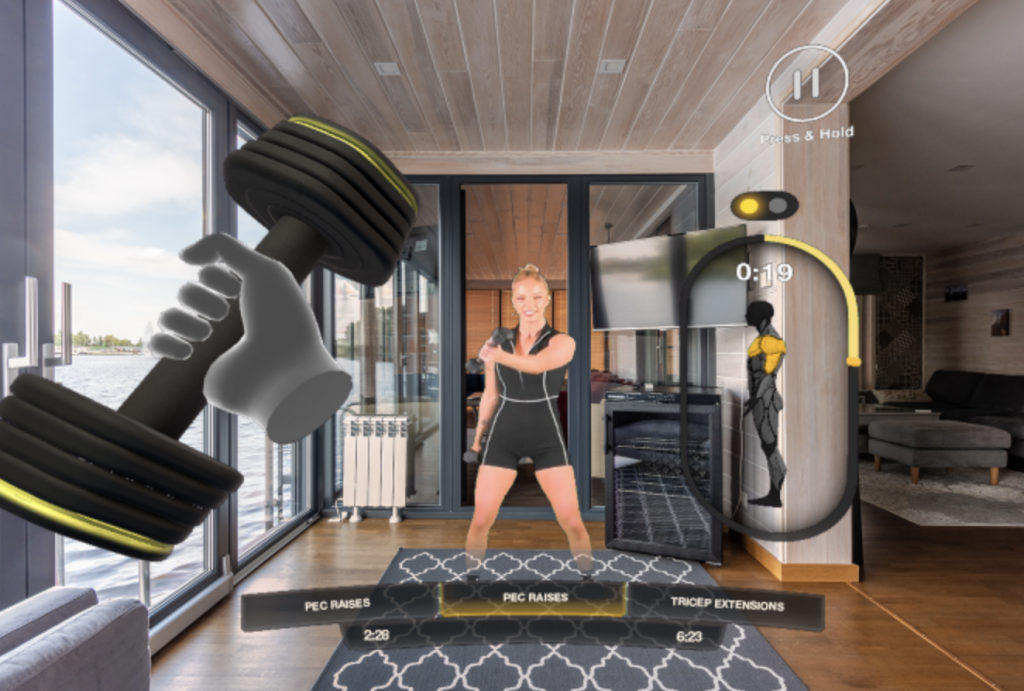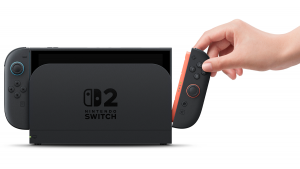Litesport Now Offers Weight-Based VR Workouts – Here’s A Personal Trainer’s Perspective


As a personal trainer, VR fitness apps aren’t something I usually lean towards. However, for Quest users looking for an introduction to strength training, the new weight-based training mode in Litesport (formerly Liteboxer) might have something to offer.
When playing VR, I’ve always enjoyed the passive fitness offered by games like Beat Saber and Blaston. I can see the appeal of proper VR fitness apps, but when I’m actually training, I tend to prefer picking up weights or doing some boxing. However, after trying out the newly updated Litesport (previously Liteboxer) app on Quest 2, that might be about to change.
The reason for Litesport’s name change is pretty simple – this isn’t just an app for punching the air to a beat anymore. The name change brings with it a new strength training mode, which actually has you using weights while working out in VR. Real weights, by the way, not virtual ones.
A lot of people will no doubt be worried about the safety aspect of training with real weights in VR. Before trying the new modes out, I had two main concerns, the first of which was about form. Anyone who has experience weightlifting knows that incorrect form can easily lead to injuries. Litesport remedies this concern with a pre-recorded virtual coach who guides each strength workout. Not only do they set the rhythm of each movement, which is essential, but also demonstrate each exercise as you go. The coach will also point out common mistakes, such as swinging the elbows when doing dumbbell curls.
Even when you’ve been lifting for decades, it’s hard to check your form during a normal workout, let alone while you’re in VR. A virtual mirror would be the ideal solution, but the guidance from the virtual coach still goes a long way towards alleviating my worries on that front. It also helps that the movements aren’t the big compound ones that can throw a person’s back out.

My other concern was a pretty simple one, and one likely shared by most VR users: what if I smack my headset with a dumbbell? The app makes use of two important features to combat this: hand-tracking support and passthrough mode. For Quest 2 users, you’re limited to the headset’s black and white passthrough, whereas those with Quest Pro will be able to work out in higher-resolution and with color. By using hand tracking and passthrough, the workouts become less like lifting in virtual reality, and more using mixed reality to offer support for newer lifters.
That last point is important too. I’ve been a personal trainer for over 13 years now and after trying Litesport’s new strength modules, I came away genuinely pretty impressed. While not a full weightlifting replacement, I see Litesport’s new modes as a great boon on those days when hitting the gym isn’t viable or just when you’re lacking motivation. This will be especially true for those of us who not only work at home, but also train at home too. I could definitely see myself relying on Litesport a couple of times a week for that extra bit of motivation, while also removing the stress of planning a training session.
Ultimately though, this isn’t really aimed at me. These new strength training modes feel far more aimed at those who are a bit newer to weight training, either wanting to build up some confidence or just those looking for a supplemental boost to other training methods. That’s why the coaches are constantly correcting standard mistakes, why they’re setting the pace, and why they’re so upbeat about everything, which is important when you’re settling into weight lifting.

You’ll need some actual dumbbells of your own to join in, but even without those and just using the controllers, the app offers a good chance to get more familiar with some classic weightlifting movements. If you do have weights, you can input how heavy they are at the beginning of a session. You’ll then get a summary of the total weight lifted at the end, as well as a breakdown of which muscle groups were worked and how intensely. It’s a nice bit of statistical validation after a lifting session, and a good way to figure out which muscle groups are likely to be a little tender the next day, especially for those not used to the constant companion that is delayed onset muscle soreness.
There’s also a little icon for each exercise showing which muscle groups it works. This isn’t just for information purposes though, because something any trainer will tell you is that knowing which muscles you’re meant to be working helps you actually use them when training. It’s called the mind-muscle connection in some fitness circles, and it basically ensures that you’re actively thinking about what you’re doing, which is something the app inspires constantly.
I’m genuinely quite impressed with it all. The fact that Litesport’s new modes make use of so many excellent Meta Quest 2 features is a big part of the appeal, but it’ll likely be even more impressive if you’ve got a higher-end headset with color passthrough, such as Quest Pro. Litesports says there will be more workouts added in the long run, and they’re even considering adding in some kettlebell exercises as well. I’m definitely a little more nervous about doing kettlebell swings in VR, but I’m still keen to see how it pans out.
For now, I’ll stick to improving my form – both inside and outside of VR.





